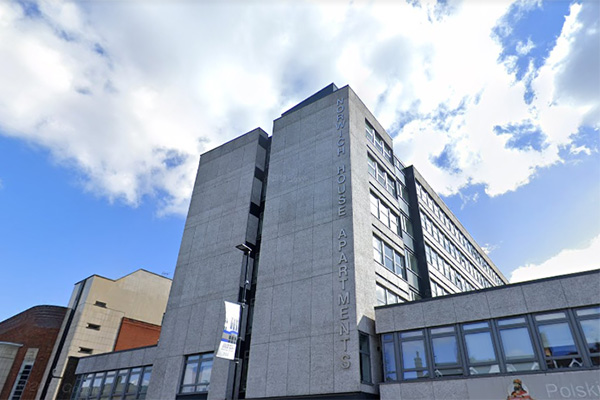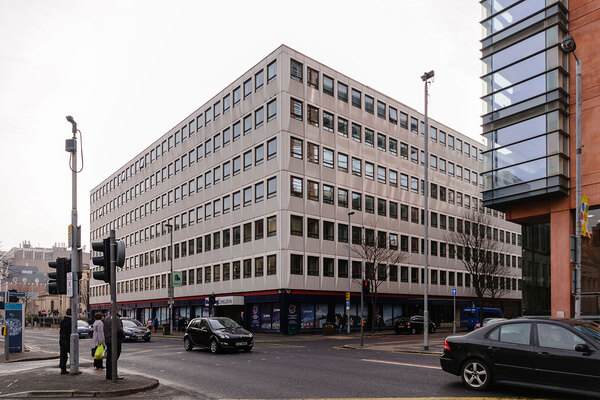
Sue Edmonds is chief executive of Capital Letters
Is it time for the unthinkable: converting empty commercial spaces to homes?
Permitted development rights are controversial, but they might be the best short-term solution to our housing crisis, says Sue Edmonds
On 24 July, Michael Gove, the housing secretary, announced that “permitted development rights are a critical component” of the government’s target of creating 300,000 new homes annually.
That has already put people in a spin. Permitted development rights are probably the most vilified of provisions, as they have resulted in some monstrous examples of ‘housing’ for vulnerable people.
A year ago, at the Capital Letters Conference, we posed the unthinkable question: are commercial-to-residential conversions one solution to the problems of supply and affordability we can already see fomenting?
We didn’t know in 2022 just how bad it was going to get. In July, Savills and the London School of Economics published their report on London’s private rented sector (PRS), which had been jointly commissioned by London Councils, Trust for London and Capital Letters.
Their evidence that the PRS has changed since COVID-19 is incontrovertible. There has been a 41% reduction in PRS listings and a 20% increase in rents. Only 2.3% of properties are at or below the Local Housing Allowance and landlords are exiting the market, particularly at the lower end.
The latest homelessness statistics, published on 25 July, show that the number of households in temporary accommodation at the end of March 2023 had increased by 10% compared with 2022.
Temporary accommodation is anything but temporary – it is an oxymoron. People stay in hotels, B&Bs and unsuitable accommodation for months and years. Most local authorities are unable to find suitable homes for such households, let alone within legislative timescales. Nationally, the waiting list for social housing has around 1.2 million households on it.
“These empty spaces negatively impact our high streets, the local economy and communities. Shouldn’t we explore whether they can be repurposed as good-quality homes?”
The situation is getting worse, but there is no silver bullet for solving the housing crisis. As Lord Nigel Crisp said recently, this is an elephant that has to be eaten one bite at a time.
Yes, the answer is to build more homes, especially social housing that is truly affordable for the people who need it. But it will be years before we have enough homes, so what do we do in the meantime?
Since our 2022 conference, we have continued to ask about whether good-quality, commercial-to-residential conversions could create the homes that we need so much. We were delighted that this was picked up by the All-Party Parliamentary Group (APPG) for Ending Homelessness and the APPG for Housing Market and Housing Delivery. Their joint inquiry into rethinking commercial-to-residential conversions was led by Bob Blackman MP and Ben Everitt MP, supported by expert advisor Dr Ben Clifford from UCL’s Bartlett School of Planning.
The level of interest in this proposition was evidenced by the quality of contributions at the oral sessions, and written submissions from an extensive range of organisations with vital experience, expertise and knowledge in this area.
The result of the inquiry was a thoughtful, considered report. It found there was significant potential to boost supply through conversions, providing – and this is critical – there are safeguards in place.
In summary, these safeguards are: strengthen the standards, including the implementation of the Healthy Homes Principles; empower local authorities to have greater influence over conversions, so they fit in with wider housing plans; and require that conversions contribute to affordable housing.
“Permitted development rights are probably the most vilified of provisions, resulting, as they have, in some monstrous examples of ‘housing’ for vulnerable people”
We are still coming to terms with the impact of COVID-19, which changed the way we work and shop. There are significant numbers of commercial buildings – offices and shops – sitting empty or underused. These empty spaces negatively impact our high streets, the local economy and communities. Shouldn’t we explore whether they can be repurposed as good-quality homes and, at the same time, regenerate high streets, enable people to live, spend money and contribute to their local communities?
Local authorities collectively own sufficient commercial units to create 20,000 homes. With imagination and a considered approach, these could be transformed into secure and settled homes for the people who so desperately need them and give them the opportunity to change their life chances.
Is it time to carefully consider the role of permitted development rights as one opportunity to start eating the elephant?
We think so, as long as the principles set out in the joint APPG inquiry are adopted as part of the government’s approach. If this is not the case, we’ll be sleepwalking into yet another crisis.
Sue Edmonds, chief executive, Capital Letters
Sign up for our development and finance newsletter
Already have an account? Click here to manage your newsletters












